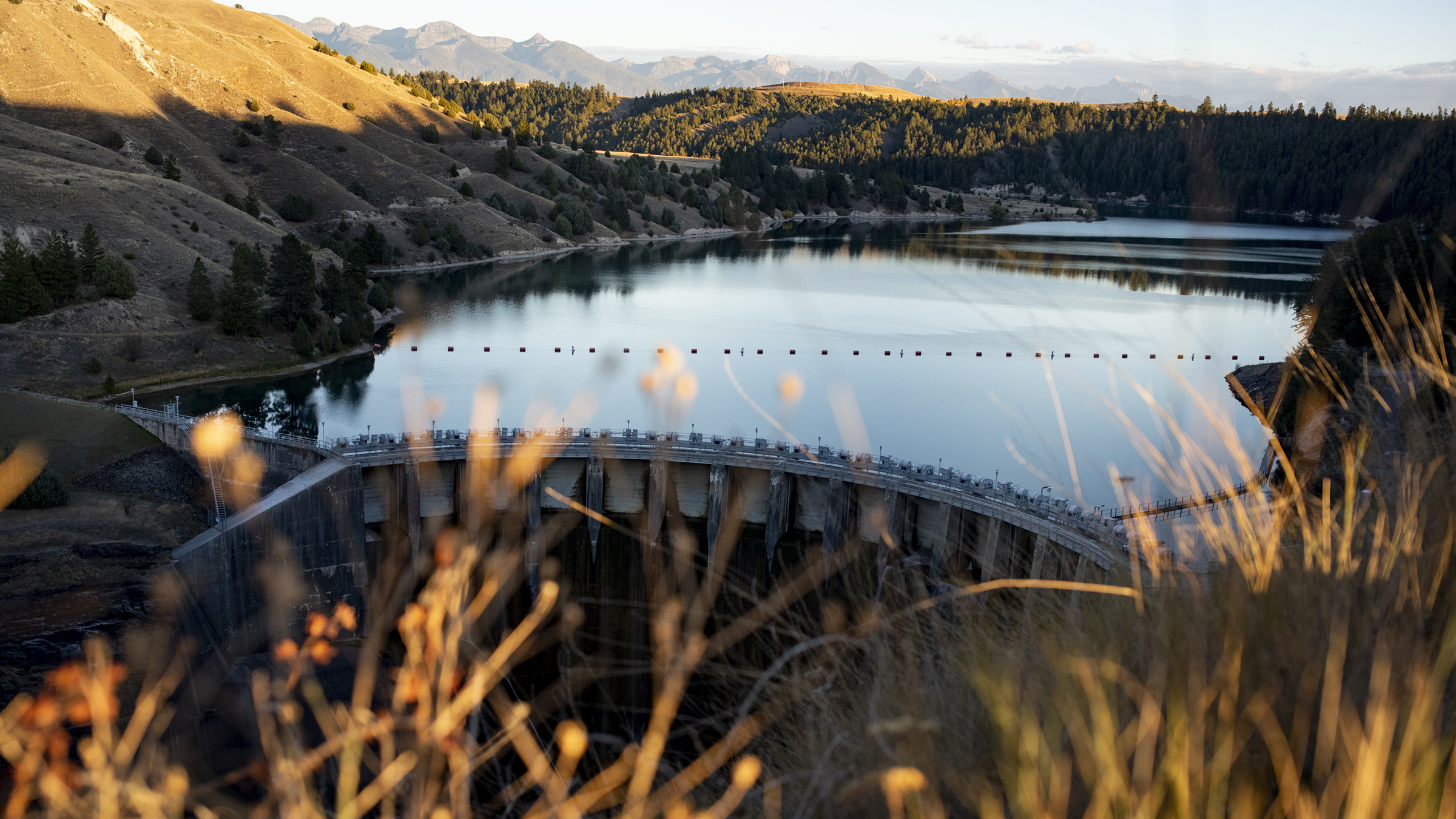Years of drought in Western states have contributed to record high prices for beef cattle over the past three years (see chart). Faced with parched pastures, ranchers in Texas, California, Oregon and other beef-producing states have resorted to selling off their animals, reducing cattle numbers. In January, the U.S. beef cattle herd was smaller than at any time since the late 1950s, according to the U.S. Department of Agriculture (USDA). Reduced cattle supply in the face of sustained domestic and foreign demand for beef has pushed up prices for cattle and calves.

While drought-induced cattle losses have hurt ranchers in many parts of the West, high cattle prices have meant increased revenue for beef producers in Ninth District cattle country—primarily eastern Montana and the Dakotas (see a ranking of states with the most beef cattle in the article below).
Historically, ranchers have responded to high cattle prices by putting more hooves on the ground—buying calves and breeding cows to restock herds and produce more animals for sale to beef processors. In time, prices fall in response to increased supply and cattle numbers stabilize at a new level.
In fact, the USDA head count showed that cattle numbers increased 3 percent over 2015, to 92 million. And in the second half of last year, calf prices fell by about one-third, according to USDA data. But research by Gary Brester, an agricultural economist at Montana State University who specializes in livestock markets, suggests that producers may not seize opportunity by increasing their herds as readily as they have in the past. He believes that continued episodic drought in Western states, together with other factors such as high labor costs, is likely to limit growth of the nation’s cattle herd in coming years.
Brester spoke to the fedgazette about the impact of drought on the beef industry and the likely implications of constraints on herd expansion for ranchers and beef consumers.
This interview has been edited for length and clarity.

fedgazette: How have droughts in the western part of the country affected beef producers, including those in district states?
Brester: These have been very regional droughts. Fifteen years ago, there was drought in Montana, then in Colorado and in the Southwest. Now California and other Western states are drought-stricken; eastern Oregon and eastern Washington have been in a drought for about three years. It’s really bad there.
Obviously, when these droughts hit, grass becomes less available. Without grass, producers try to get by, maybe by buying some hay. But eventually, if you don’t have grass, you’re not going to have cows. So we’ve seen a lot of herd reduction in many of these areas; cows have been sold off, some have been slaughtered, some have been moved to other locations.
Montana, North Dakota and South Dakota haven’t been hit as bad—these states have been able to maintain cattle herds at about the levels we’ve seen historically. But that hasn’t been true elsewhere. That’s one reason we don’t have as much beef to go around right now.
fedgazette: Given that Montana and the Dakotas have lost fewer cattle to drought, I would think that current high beef prices present a prime market opportunity for ranchers in those states.
Brester: That’s how markets work, right? One person’s devastation is another person’s gain. Because supplies have been limited by drought in some regions, it puts those who have supply in a good bargaining position, and that’s why prices have been bid higher. We have a lot of excess beef-processing capacity in this industry. At one time, in 1975, our cattle inventory was 131 million head; today it’s closer to 90 million head. Our packing plants and feedlots were built to handle that much bigger inventory, and now that the herd size has shrunk, we’ve had some plant closings because people are scrambling to get enough product for their operations.
The people who gain the most are those with the product that’s the most limited in supply, and right now that is calves. The fact of the matter is that the high cattle prices have been a very positive thing for cattle producers in our region.
fedgazette: How are ranchers in the district spending extra income from calf and cow sales?
Brester: To a great extent, they’re replacing equipment, improving their technologies, improving the genetics of their herds. Some may be thinking about expanding their ranch operation by buying a parcel or two of pasture nearby. Mostly, these ranchers are fixing up their balance sheets, paying down debt and reinvesting in their operations.
fedgazette: The U.S. cattle herd is the smallest in decades, so given high cattle prices, it seems ripe for expansion. Do you expect beef producers in the district and elsewhere to increase their herds as has happened in the past when cattle prices spiked?

Brester: We’re certainly seeing some herd expansion; we know that because heifer slaughter was down this past year. So there’s no question that higher prices are encouraging herd expansion. The issue becomes how big the expansion will be. If it’s very large, prices are going to go down to their long-run average over the next year or two. But I don’t think we’re going to see the size of the herd increase as much as one would anticipate.
We have data going back to 1867 on cow herd size, and for about 150 years we’ve had larger responses to high prices than what we’ve seen in the last 20 years. The major reason for that is the drought that continues in some parts of cattle country. Over the past couple of decades, drought has occurred in certain areas and it’s persisted for a couple of years.
We’re using all the grass we’ve got right now in these areas. Unless more grass grows in areas that are drought-stricken right now, or we start taking corn, soybeans and spring wheat out of production and putting it into improved pasture or irrigated hay, we’re not finding more grass.
If we didn’t see these periodic droughts, rather than adding 2 million cows to our cow herd over the next year, we’d probably be getting closer to 6 million additional cows. Then we would see prices for calves going back to their long-run average.
fedgazette: Are there other factors that could limit growth in cattle numbers?
Brester: Yes. One key factor is increasing labor costs. Cow-calf production is one of the more labor-intensive agricultural operations that you’re going to see in our part of the country. As labor costs have gone up, producers have tried to economize. Some beef producers have said, “I can use less labor if I just concentrate on crops.” We have fewer people in the cattle business today than we used to. Some of that is because of labor costs.
There are some other things going on as well. For years, many crop farmers who also could produce cattle considered cattle raising an income diversification strategy. Selling both crops and livestock is a way of insuring against years when crop income is really low. But today, 96 percent of the five major crops in the United States are covered by some type of crop insurance. Relying on crop insurance is a much less risky and expensive way to try to avoid a low-income year than raising cattle.
Cattle producers have also seen much higher feed costs, especially for hay, because of drought and the profitability of other crops.
Finally, we have more and more traditional cattle pasture owned by the federal and state governments that’s not being grazed. We’re seeing the general population say, “We want wilderness areas, we want nonmotorized vehicle areas, we want more areas for hunting.” This has also limited grass availability.
fedgazette: Given these constraints on cattle supply, are cattle and beef prices likely to remain elevated for a while?
Brester: There’s going to be some drop in cattle prices this year, and that’s in response to a couple of things. First of all, we’re probably going to produce more beef this year. And the pork and poultry industries have worked through their disease issues and are increasing production. So we’re going to have a lot of protein on the market. We’ve already seen prices for this year’s calf crop soften by a fair bit.
But longer term, I don’t see us increasing the herd size as much as we’ve done in the past, because I don’t think we have the capacity to do it from a grass standpoint. Prices are going to soften some, but I think the trend in cattle prices over the next decade is going to be above the historical average.
There is one caveat: All of this depends on demand for beef staying as strong as it is today. If for some reason demand falls appreciably—because of a recession that reduces incomes, for example, or a big jump in oil prices—then my story goes out the window. Cattle prices are going to fall.
fedgazette: Thank you, Gary.





